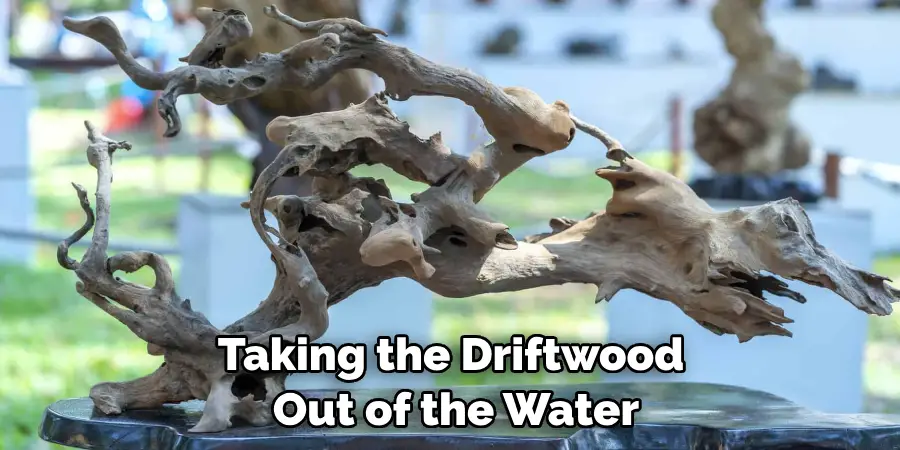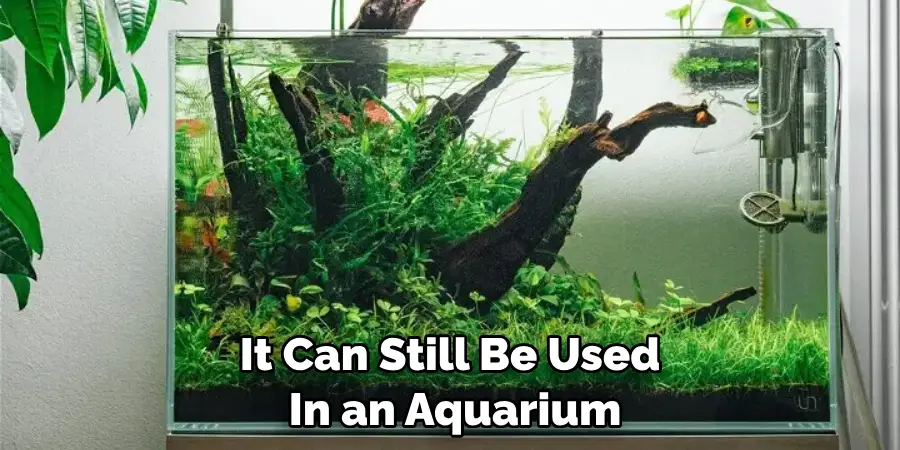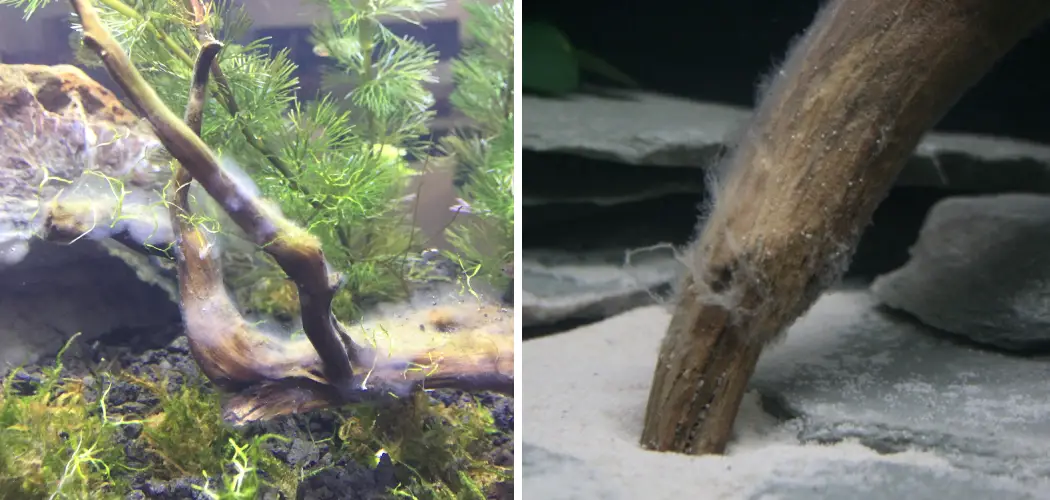Are you looking for a solution to get rid of the pesky white fungus that has been growing on your driftwood? If so, you’re in the right place! White fungus can be an unsightly and tricky problem to tackle, but there are some effective steps you can take to get rid of it.

In this blog post, we’ll break down exactly how to get rid of white fungus on driftwood with simple and easy-to-follow instructions. Read on for more information about why this happens and what you need to do to eliminate it once and for all!
In this blog post, we will discuss how to effectively identify and remove white fungus from your driftwood without damaging it or harming its natural aesthetic. You’ll learn tips and tricks that make the process as easy as possible.
From understanding what causes the growth in the first place to cleaning solutions that really work, we’ve got you covered! So read on if you want some helpful advice for eliminating this unwanted visitor from your aquarium decorations!
What Causes White Fungus on Driftwood?
1 . Biological Process
White fungus on driftwood is caused by a biological process called “saprolegniasis”. Saprolegnia are fungi-like organisms that grow in water and attach themselves to organic matter like driftwood. When driftwood is submerged in water, the Saprolegnia will attach itself to it and begin consuming organic material as food. As the fungus feeds, it will produce a white or grayish-colored growth on the driftwood surface.
2 . Aquarium Conditions
The white fungus can also be caused by changing aquarium conditions. If your water has high levels of ammonia, nitrite, and nitrate then it is more likely to support the growth of Saprolegnia. An imbalance of pH levels, too much light, and an excess of organic material can also contribute to the growth of white fungus on driftwood.
3 . Prevention
Prevention is key when it comes to controlling white fungus on driftwood. Regularly testing for ammonia, nitrite, and nitrate levels will help ensure that your aquarium doesn’t become a breeding ground for Saprolegnia. It’s also important to keep the pH levels balanced and avoid overfeeding your fish or adding too much organic material. Finally, ensure that your driftwood is completely submerged in water at all times.

4 . Removing White Fungus
If you do find white fungus on your driftwood, the best way to remove it is by taking the driftwood out of the water and scrubbing it gently with a soft bristled brush. This will help loosen any fungus that has attached itself to the wood. Once you have done this, soak your driftwood in hydrogen peroxide for 30 minutes.
This will kill off the white fungus and any other unwanted organisms that may be present. After the 30 minutes has passed, rinse off your driftwood with clean water and allow it to dry before returning it to your aquarium.
10 Ideas on How to Get Rid of White Fungus on Driftwood
1 . Boiling Water
Using boiling water is a great way to get rid of the white fungus on driftwood. Boil some water and pour it over the affected areas. Let the wood soak for 15 minutes before rinsing off with warm water.
2 . Bleach
Mix one-part bleach and four parts of warm water. Soak the driftwood for 20 minutes and then rinse off in plain warm water.
3 . Hydrogen Peroxide
Hydrogen peroxide is a powerful antifungal that can help get rid of white fuzz on driftwood. Mix a solution with equal parts hydrogen peroxide and warm water, and soak the wood for 15-20 minutes. Rinse it afterward and let it air dry.

4 . Distilled White Vinegar
White vinegar is an effective tool for removing white fuzz from driftwood. Mix one-part distilled white vinegar and four parts warm water, then use a cloth to scrub the affected areas of the wood. Rinse off with plain warm water afterward.
5 . Alcohol
Isopropyl or rubbing alcohol can help get rid of white fuzz on driftwood. Dab some alcohol onto a cloth and scrub the affected areas. Rinse off with warm water afterward.
6 . Baking Soda
Baking soda is a natural cleaning agent that can be used to remove white fuzz from driftwood. Mix one-part baking soda with four parts warm water and use a cloth to scrub the affected areas of the wood. Rinse off with plain warm water afterward.
7 . Tea Tree Oil
Tea tree oil is a natural antifungal that can be used to get rid of white fuzz on driftwood. Mix five drops of tea tree oil with one cup of warm water, and use a cloth to scrub the affected areas. Rinse off with plain warm water afterward.
8 . Lemon Juice
Lemon juice is a great natural remedy for removing white fuzz from driftwood. Squeeze some lemon juice onto a cloth and rub it on the affected areas of the wood. Let it sit for 10 minutes before rinsing off with plain warm water.
9 . Salt Water
Salt water can be used to help get rid of white fuzz on driftwood. Mix one-part salt and four parts warm water, then use a cloth to scrub the affected areas of the wood. Rinse off with plain warm water afterward.

10 . Sunlight
Sunlight is another natural remedy for removing white fuzz from driftwood. Place the wood in direct sunlight for a few hours and let it air dry afterward. You may need to repeat this process several times before all of the fungus is removed. Make sure to keep an eye on the wood and bring it inside if it starts to dry out too much.
These are some of the best methods for getting rid of white fungus on driftwood. Be sure to take the necessary precautions when using any of these solutions, and remember that prevention is always better than cure! Taking good care of your driftwood will help ensure it remains free from fungi in the future.
Frequently Asked Questions
What Precautions Should I Take When Removing White Fungus From Driftwood?
It is important to take precautions when removing white fungus from driftwood. Wear protective gloves and a breathing mask as the debris can cause skin irritation and allergies, respectively. Make sure to also work in a well-ventilated area. Additionally, do not use bleach or any other harsh cleaning products on driftwood as these can damage its structure.
How Can I Keep White Fungus From Growing on Driftwood?
White Fungus is caused by excess moisture and high humidity levels, so it is important to make sure your driftwood is always properly stored in a dry place away from direct sunlight. It is also beneficial to use an aquarium sealant as this can prevent the growth and spread of the fungus. Additionally, check your driftwood regularly for any signs of white fungus and remove it as soon as possible.
How Long Should I Soak Driftwood to Remove White Fungus?
Soaking driftwood in a mixture of water and a mild detergent is an effective way to remove white fungus. Depending on the size and type of driftwood, you should soak it for at least one hour or up to overnight. Note that soaking driftwood in stronger solutions such as bleach is not recommended as this can damage its structure.

Can I Still Use Driftwood After Removing White Fungus?
Yes, once you have successfully removed the white fungus from your driftwood, it can still be used in an aquarium. However, it is important to make sure all traces of the fungus are gone before placing the driftwood in the tank. Additionally, you should regularly check for any new signs of white fungus and take action as soon as possible if needed.
Are There Any Alternatives to Soaking Driftwood in Water?
Yes, there are several alternatives to soaking driftwood in water. For example, you can use a diluted vinegar solution or an aquarium sealant to prevent the growth of white fungus. Additionally, using a brush or toothbrush to gently scrub away any existing fungus is also an effective method. As mentioned before, do not use harsh chemicals or cleaning solutions on driftwood as this can damage its structure.
Conclusion
It is important to remember that driftwood can be affected by white fungus, and this fungal infection must be addressed quickly and carefully in order to avoid future health issues for fish or any other aquatic creatures. However, with the right materials and mindful treatment, you can get rid of white fungus on driftwood easily and safely.
Regular cleaning of driftwood pieces should be done regularly to prevent any further buildups. Additionally, do not forget to rinse off any chemicals used for disinfection before returning your driftwood to the water. With these tips on how to get rid of white fungus on driftwood, you can create a healthy environment for hosting fish or aquatic plants in all types of aquatic systems.

